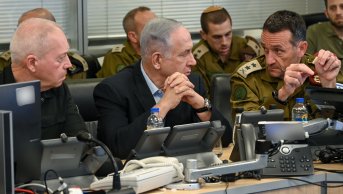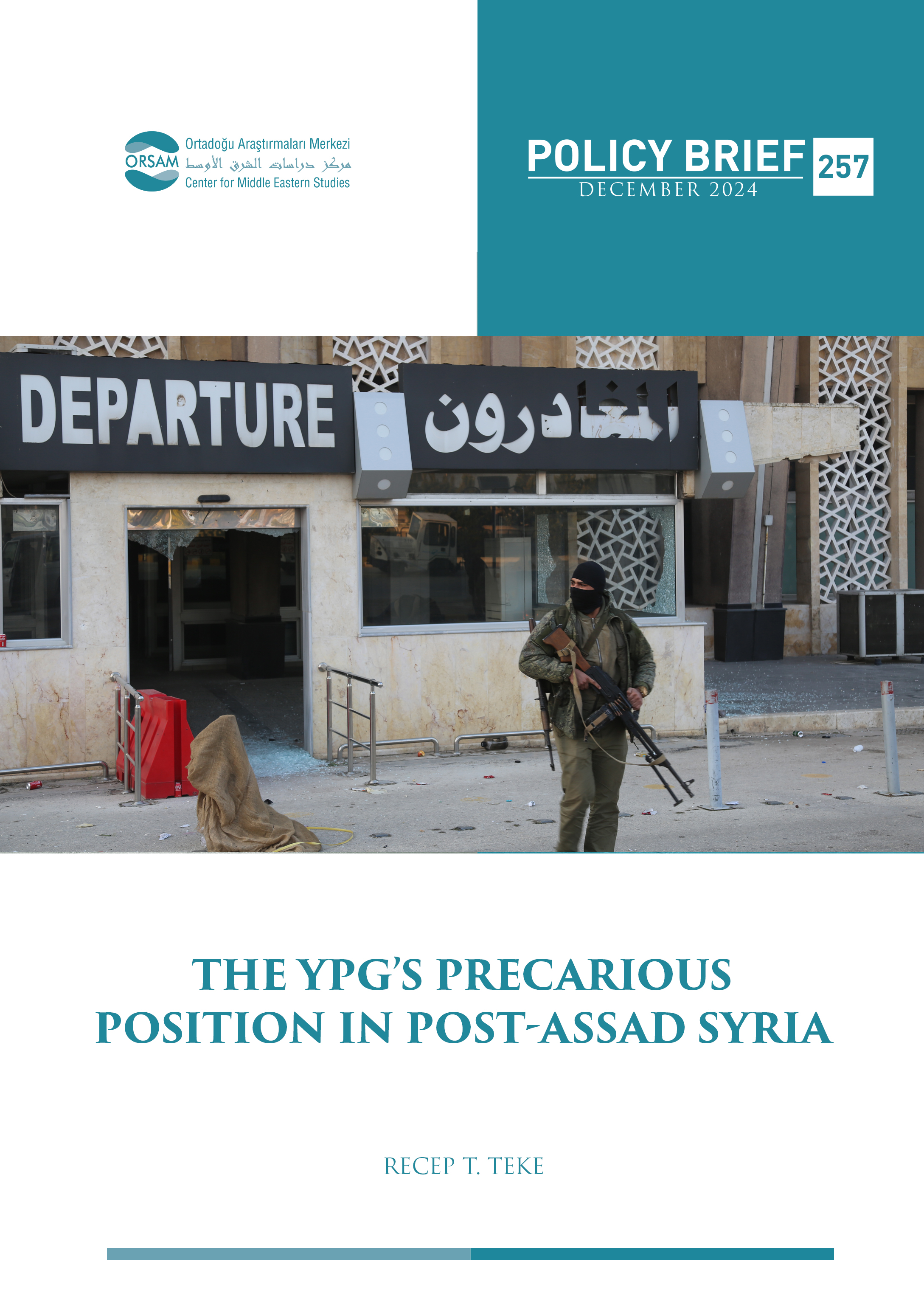Iraq-2003 vs. Syria-2013: Weapons of Mass Destruction as an Actual Threat

The rationale behind Operation Iraqi Freedom in 2003 was that Saddam Hussein's regime possessed weapons of mass destruction and could use or delegate their use to terrorists against the US and its allies.
After it was revealed that at the time of the crisis Iraq did not possess weapons of mass destruction (WMDs), namely nuclear, chemical or biological weapons, international public opinion acquired the impression that WMDs were used as a pretext to create fear and to legitimize allied intervention in Iraq for broader goals in the region. However, this is an incomplete picture and analysis, which ignores the history of Iraq's motivations and capabilities, as well as the US's perceptions of threat and formation of policy options after the September 11 attacks. This opinion about WMDs, particularly in countries which remained doubtful about an operation against Iraq, has diminished the significance of efforts for nuclear nonproliferation and those to ban the stockpiling, manufacture and use of chemical and biological weapons.
The recent use of chemical weapons against civilians in Syria opened up the debate on WMDs and “use of force” once more. International law on the legality of a military operation against a sovereign state versus the norm on the non-use of chemical and biological weapons in war seem to clash: The former must be authorized by the United Nations Security Council (UNSC); otherwise, it would be a breach of sovereignty, hence against the UN Charter, while the latter norm is endorsed by the Geneva Protocol of 1925 and reinforced by the Biological Weapons Convention of 1972 and Chemical Weapons Convention of 1993. The main purpose of the UN is to maintain international peace and security, and the language used in enforcement actions makes reference to this goal. The international community endorsed the idea that the proliferation of weapons of mass destruction is a threat to international peace and security with UNSC Resolution 1540 (2004). Thus, it is inconsistent not to treat the norm of non-use of chemical and biological weapons in war as an inextricable part of their commitment.
The attitudes of Russia and China in the UNSC are highly determined by their strategic interests in the region, and it does not come as a surprise in international relations. The other permanent members underline that if Syria -- which is believed to be responsible for this attack -- continues with impunity, this will seriously undermine the norms on non-use, nonproliferation and disarmament of chemical weapons. It could significantly reduce the restraint on the part of states or non-state groups of concern.
The transformation of current conflicts from one between states to that between intra-state groups, plus the effect of new media, brought the issue of the protection of civilians to the forefront due to civilian casualties, the flow of refugees and human suffering in Syria. This has forced states to take action, because these issues also have regional, societal, economic and environmental consequences. In addition, the so-called “Arab Spring” or “awakening” has underlined a respect for human rights and democratic governments. These are values attributed to Western civilization, particularly the protection of natural rights (right to life, liberty and property). The difference in attitude to the mass murder of civilians by the use of chemical weapons can also be viewed in this light.
The Iraq case had set a precedent on WMDs. Further clarification is needed to understand why the international community should not turn a blind eye to the use of chemical weapons in Syria. It was argued that the “threat of WMDs” was an exaggerated one in 2003. While Washington could have sought other avenues to make its case to world public opinion and its allies, the American threat perception and assessment at the time are ignored by many. The September 11 attacks changed the way American decision makers evaluated potential threats. Previously, a threat would be perceived as “real” when an actor had both the motivation and capability to attack. However, 9/11 elevated the strategy of prevention (pre-emption in general use) instead of deterrence or retaliation, because the US thought that it could not afford another terrorist attack and one possibly employing WMDs. Therefore, the threat assessment in Washington was such that if an actor (state or non-state) had an anti-American stance (motivation), it could or would seek to acquire capabilities in the future to attack the homeland or targets in allied countries. A terrorist attack with the use of WMDs would be unacceptable. Therefore, the only “remaining option” was to prevent such an attack.
Thus, the rationale behind the US's assessment of threat in Iraq was not the very existence of WMDs at that specific time, but the fear that Saddam Hussein could resume Iraq's WMD programs because UN sanctions would be lifted as a result of inspection reports confirming the absence of WMDs. The Bush administration failed to explain the link between UN sanctions that limited the financial capability of Iraq and Baghdad's potential military capabilities. The worst-case scenario in Washington was a transfer of WMD-related material or weapons to terrorist groups that could use them against the US or its allies. The revelation that there were no WMDs in Iraq and its subsequent acknowledgement by George W. Bush reinforced the public perception that “WMDs are clearly an instrument to arouse fear and legitimize international action.” Hence, when chemical weapons were actually used against civilians in Syria, the international community took careful steps in the assessment of the situation and consideration of options.
Clash of international law and international norms
According to international law, a military operation against a state, except in case of self-defense, would violate the principle of non-intervention and can only be legalized via the authorization of the UNSC. New norms have been endorsed, such as the responsibility to protect (R2P): The international community is responsible to protect civilians when there is considerable human suffering and casualties inflicted by a government. It is understood that this would not be a breach of sovereignty, because governments are supposed to provide security for their citizens.
The recent chemical attack in Syria presents a challenge and a new task to the international community to align international law on the use of force with the norm of prohibition of the use of chemical weapons in war. There are other relevant norms of the international nonproliferation regime, such as the dismantlement of all chemical weapons and the ban on their acquisition, stockpiling and use endorsed in the Chemical Weapons Convention (CWC) -- to which some states are not a party, including Syria.
It takes significant time and effort to construct international norms and law on such issues relating to state security. Particularly in the Middle East, WMD proliferation is a result of mutual threat perceptions, and efforts for arms control and disarmament have failed. There has been a considerable effort towards a Middle East Weapons of Mass Destruction Free Zone (MEWMDFZ) since the 1990s, and the proposal gained pace after 2010. However, the conference to be held in December 2012 could not take place. Two key players, Egypt and Syria, are in domestic turmoil and the other two are Iran and Israel. The initiative for MEWMDFZ is significant for regional security: One of the outcomes would be to decrease the utility of WMDs for state security. Thus, if the chemical attack in Syria passes with impunity, the international community is concerned that possessors or aspiring possessors of such weapons will have less restraint on their use in conflicts, thus emphasizing their utility as a “weapon of war.” This would undermine the norm of non-use and the nonproliferation efforts.
In traditional wars, the distinction between soldiers and civilians was observed. However, current conflicts directly affect civilians, and minimizing civilian casualties is not necessarily the primary concern. States have begun to prioritize the avoidance of civilian casualties and mass refugee flows as they affect regional security. The media highlights the impact of civil war and conflict on vulnerable civilians. Therefore, the use of chemical weapons in Syria and the disturbing images in the media are likely to pave the way for a debate on a new norm on military intervention or “punishment.” A viable method to avoid misinformation and misperception on WMDs and to observe nonproliferation norms is to raise awareness of the threat of WMD proliferation and educate uninformed parties on the efforts to prevent it.



